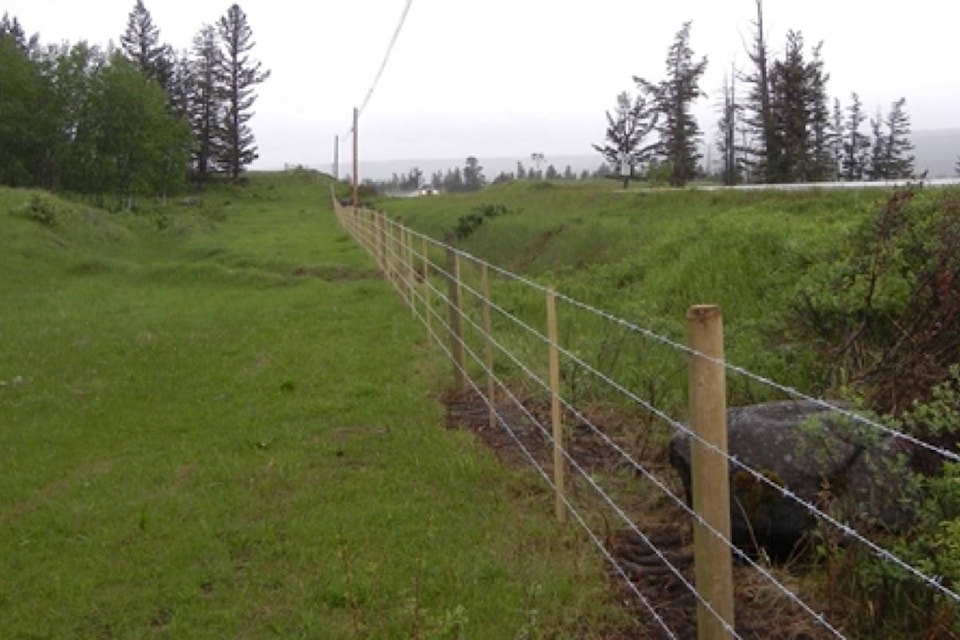Most of the 100 kilometres of burned livestock fencing adjacent to the province’s highways have been repaired or replaced; but Kevin Boon, general manager of the BC Cattlemen’s Association (BCCA), says that the work has been a challenge in our area.
“This area has high archaeological sensitivity for First Nations,” he explains. “We’ve had several discussions with them about establishing guidelines and got agreement, so we’re going ahead.”
Sixty kilometres of fencing west of Williams Lake has already been replaced, and work along the highways near Ashcroft, Cache Creek, 108 Mile, and Williams Lake is ongoing.
Boon says that the BCCA and the provincial government have partnered on the Provincial Livestock Fencing Program for seven years. “We have the infrastructure and the contractors in place, so we said ‘Let’s get it done.’ The big thing was to get containment of the cattle, to prevent them going on highways. And we had to get that containment before the cattle started coming down from the hills.”
In addition to $2 million in regular funding, the provincial government provided another $2.2 million after this summer’s wildfires, as well as $4 million to repair Crown range infrastructure that was damaged or destroyed. “We know how much it costs per kilometre of fencing, so we knew how much money was needed for the fire area.
“And because so much fencing was burned, we didn’t have to go through the normal assessment and examination. The fences were gone, so the risk to the public was large.”
Boon notes that while the fences benefit ranchers, they are mostly to ensure the safety of the public, and are assessed on a constant basis for such things as age, condition, the amount of traffic nearby, and the number of cattle behind the fence. “Ranchers are in charge of maintaining the fences year to year. A good fence will last 30 to 40 years if it’s been maintained, but ranchers know when a fence is coming to its end and can’t be adequately maintained: if the wire is rusting or if fence posts are rotting. Then they’ll put in an application [for new fencing].”
Boon says that when it comes to replacing fencing that was destroyed on Crown land, there will be assessment of where the fences were, and a determination as to whether the fencing was in the right place. “It’s an opportunity for the Range branch. We may not put fences back where they were. The fewer fences we need to have out there, the better.
“We’ll look at the cattle and wildlife numbers. There are places that are more heavily populated with wildlife, and we want to make sure we build fences that aren’t hazardous to them, and only put them in the areas we need them. And if there’s a fence, predators can corner cattle against them, so the more open spaces the better. Fences tend to be a necessary evil.”
Boon says that there are no firm numbers on the amount of infrastructure damage on Crown land or on the number of cattle killed in the wildfires. “We won’t have a firm number on the number of cattle killed until early in 2018. Right now the cattle can be 50 or 60 miles from home, driven there by the wildfires.”
Motorists are advised that until the fencing replacement is completed, livestock may potentially wander on or near highways. Drivers need to be mindful of this, and drive with caution.
editorial@accjournal.ca
Like us on Facebook and follow us on Twitter
